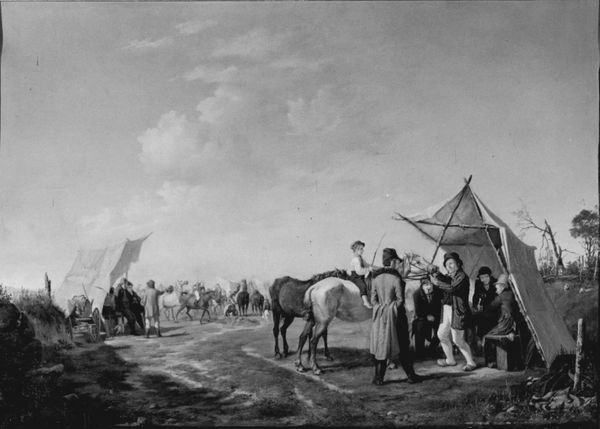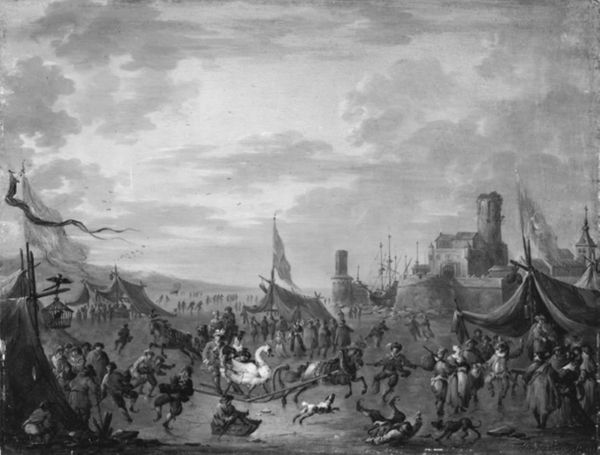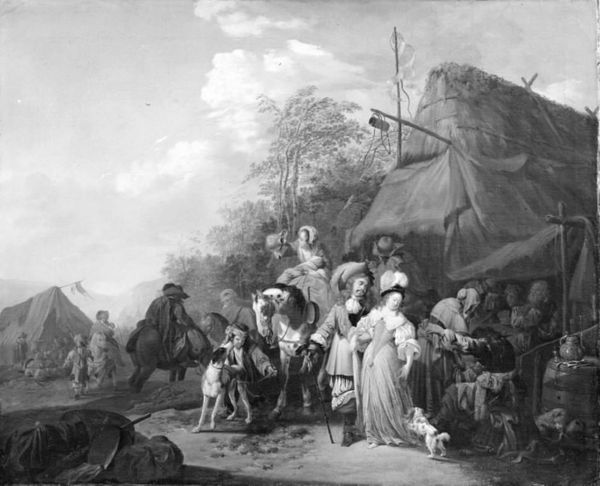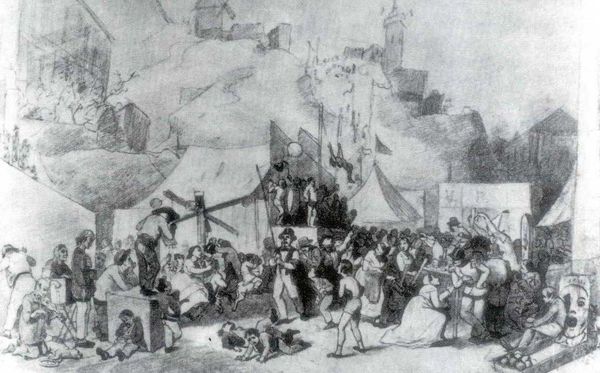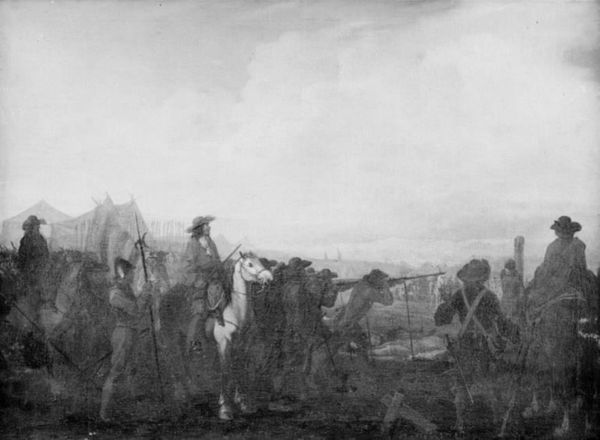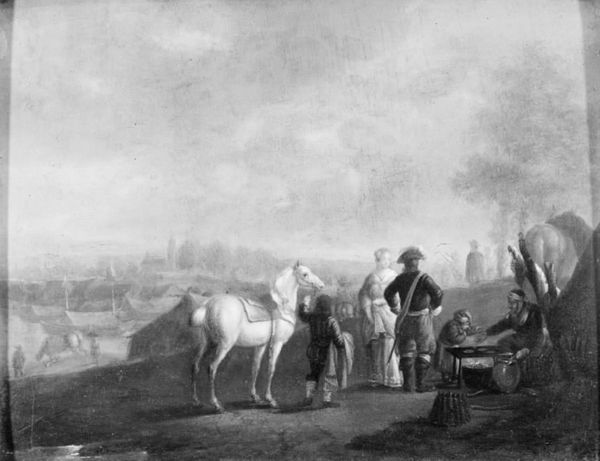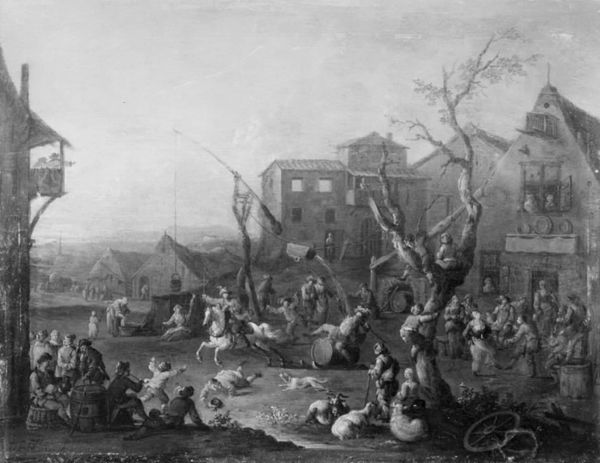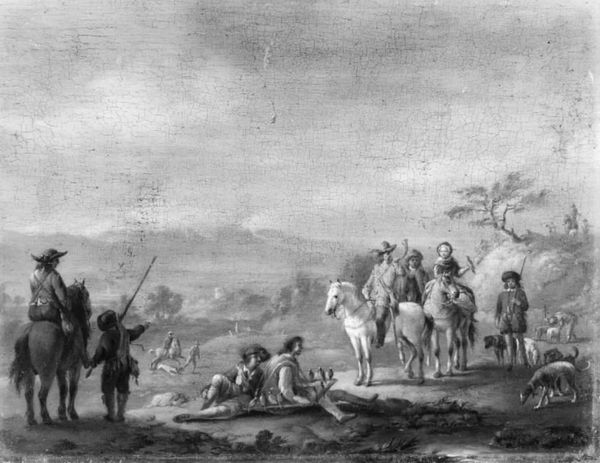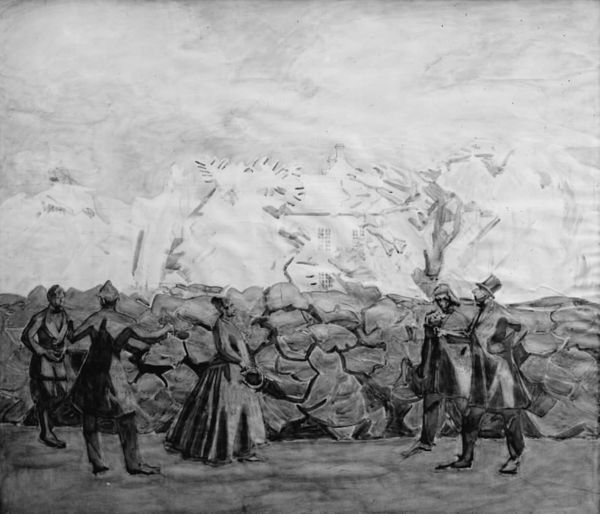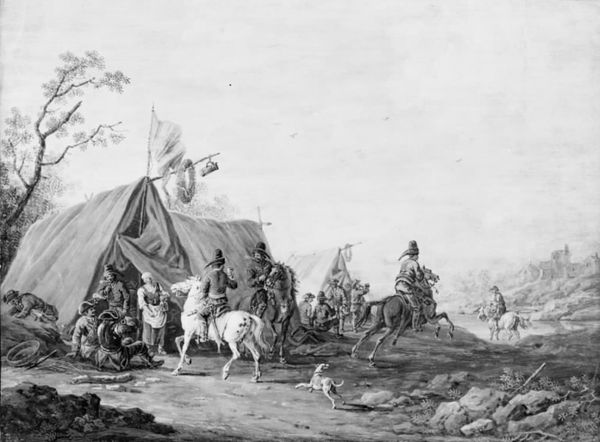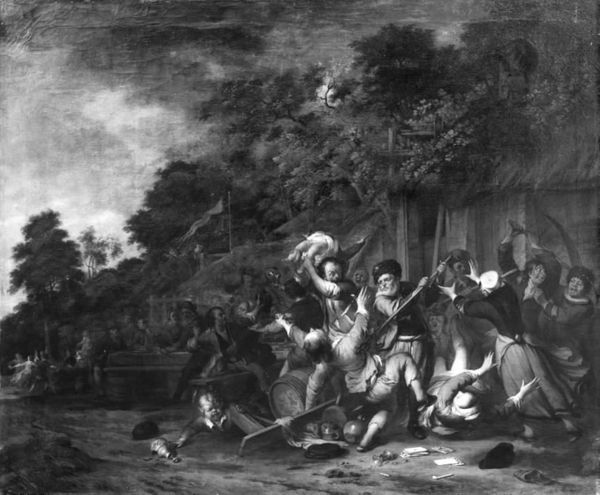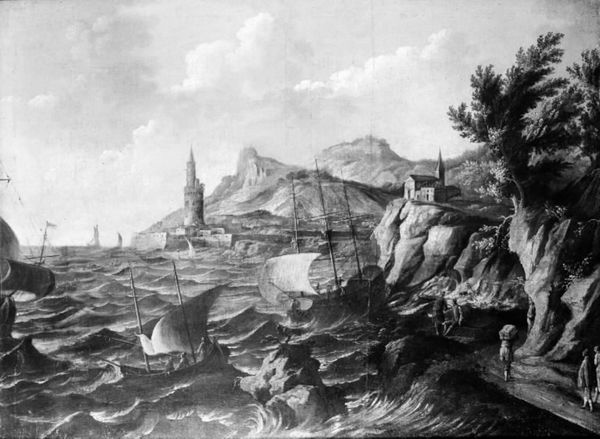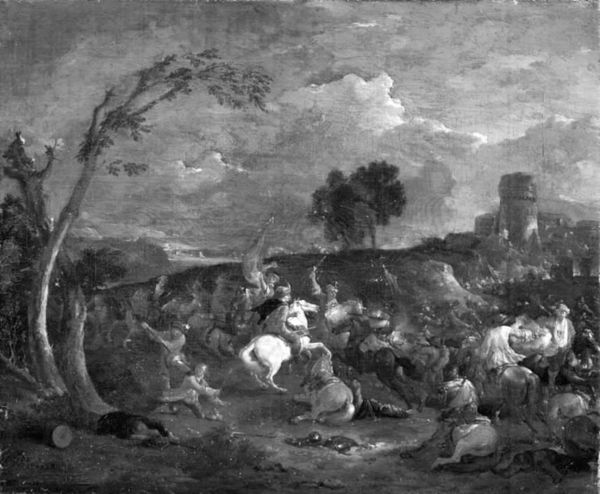
painting, oil-paint
#
baroque
#
painting
#
oil-paint
#
landscape
#
figuration
#
black and white
#
monochrome photography
#
genre-painting
#
monochrome
#
realism
#
monochrome
Dimensions: 102 cm (height) x 87.7 cm (width) (Netto)
Editor: So, here we have “Camp Scene,” painted with oil sometime between 1626 and 1700, and the museum attributes it to Gottfried Hempel. It strikes me as a snapshot of daily life, though shrouded in monochrome. How do you interpret this scene? Curator: Look at how the figures are arranged, clustered yet detached. Tents and horses… they create a space that feels both temporary and laden with unspoken rules. Consider the tent; the archetypal symbol of impermanence, domesticity, refuge… Yet, within it, and without, these figures enact their dramas, their power plays. Does the monochrome enforce the idea of an easily legible historical artifact? Editor: Legible? Curator: As if we look at an “old” painting and feel confident of understanding all that it meant in its day and still means now… Note the horses, emblems of status but also beasts of burden. This interplay reveals social structures but what about the people? Is it really legible when presented as primarily a "black and white" rendering? Do we assume to easily “see” them and what they meant? Editor: That's an interesting point. The monochrome flattens everything, obscuring detail but also removing distractions of color. The symbolism you mentioned becomes almost amplified… their arrangement feels intentional, like a stage play. Curator: Exactly. It prompts questions. Who holds the power? Who are the onlookers? The figures on horseback certainly seem set apart… what cultural scripts are being performed here? Is it that they stand literally and symbolically elevated? And for what reason? What stories and histories linger in our visual memory? Editor: I see it now – the composition creates a hierarchy, amplified by the stark contrast and those enduring symbols, even today. It feels like the painting isn't just showing a camp scene, it's holding a mirror to the dynamics of power. Curator: And that is precisely the lingering impact that allows the painting to survive the passing of centuries and endure through us today!
Comments
No comments
Be the first to comment and join the conversation on the ultimate creative platform.
